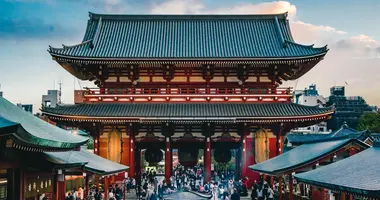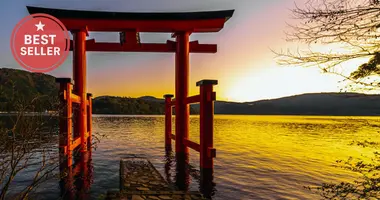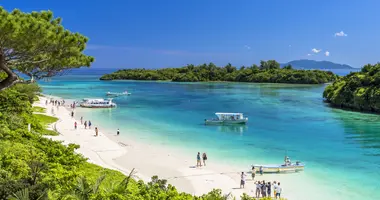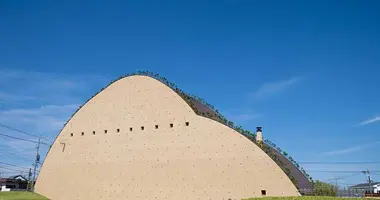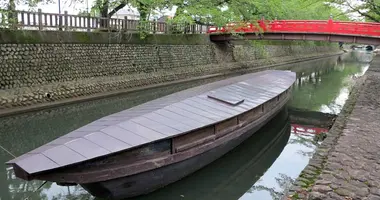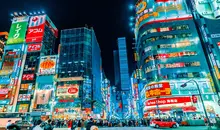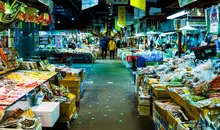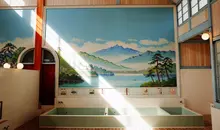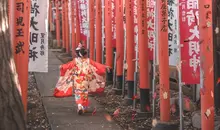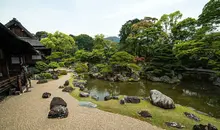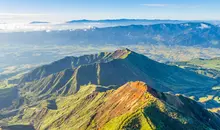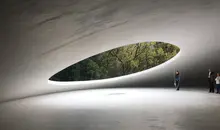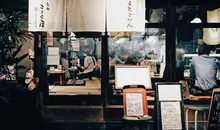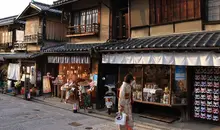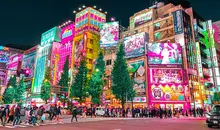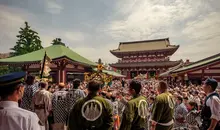Okazaki Castle: A historic gem and cultural landmark in Japan
- Published on : 27/01/2024
- by : Japan Experience
- Youtube
Nestled in the heart of Aichi Prefecture, Okazaki Castle stands as a testament to Japan's rich feudal history. This iconic structure, known as the birthplace of Tokugawa Ieyasu, one of Japan's most influential historical figures, offers visitors a captivating journey through time. From its strategic location along the Tokaido highway to its role in shaping the Edo Period, Okazaki Castle has played a pivotal role in Japanese history. Today, it serves as a popular tourist destination, combining historical significance with natural beauty. Let's explore the fascinating story of this Okazaki Castle History and discover why it continues to captivate visitors from around the world.
The rich history of Okazaki Castle
The story of Okazaki Castle begins in 1455 when Saigo Tsugiyori built a wooden fortification on the grounds of Myodaiji Temple. However, it wasn't until 1531 that the castle was moved to its present location by Tokugawa Ieyasu's grandfather. This move proved pivotal, as Okazaki Castle would later become the birthplace of Tokugawa Ieyasu in 1543, a man who would go on to unify Japan and establish the Tokugawa shogunate.
Following the Battle of Sekigahara in 1600, where Ieyasu emerged victorious, he moved his base of operations to Edo (present-day Tokyo). From then until 1868, Okazaki Castle was occupied by vassals of the Tokugawa clan. This period saw Okazaki flourish as a prosperous castle town, benefiting from its strategic location on the Tokaido highway between Kyoto and Edo.
However, the castle's fortunes changed with the dawn of the Meiji era. In 1873, Okazaki Castle was demolished on orders from the new Meiji government, leaving only the foundation stones, moats, and stone walls. It wasn't until 1959 that the castle was reconstructed in its original style and size, along with an annex and well house, breathing new life into this historical landmark.
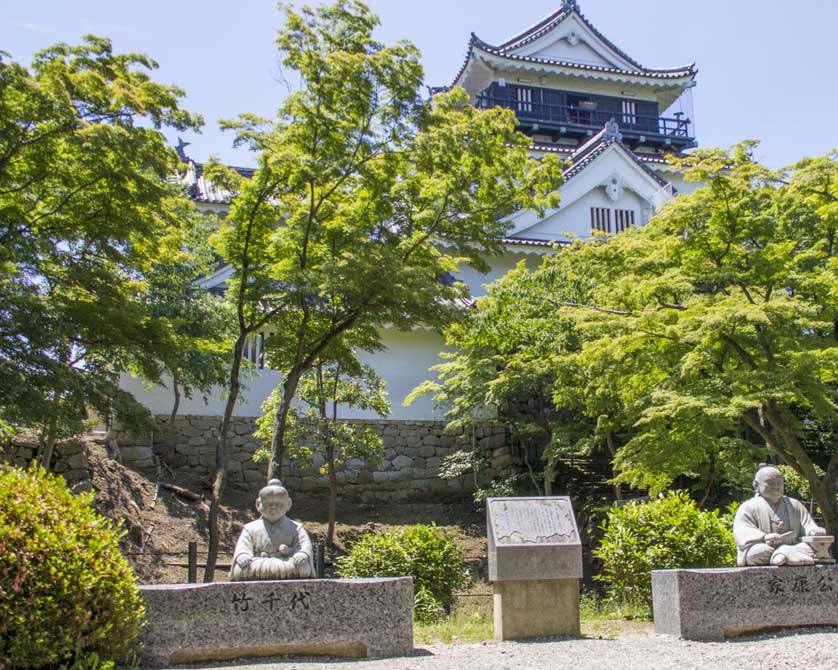
Architectural features and reconstruction of the castle
The reconstructed Okazaki Castle is a marvel of modern engineering combined with traditional Japanese castle architecture. The main keep is a ferro-concrete structure, featuring three tiers and five floors. This design faithfully replicates the original castle's appearance while incorporating modern building techniques for durability and safety.
Inside the castle, visitors can explore exhibits showcasing various artifacts from the original structure. These include roof tiles, shachi (mythical fish-shaped roof ornaments), and even reproductions of Edo Period fireworks, highlighting Okazaki's long history in the fireworks industry. The interior also features video displays and dioramas depicting historical battles and the castle town's development.
One of the castle's most impressive features is its top floor, which houses a viewing gallery offering panoramic views of Okazaki city and the Mikawa Plains. This vantage point not only provides breathtaking scenery but also helps visitors understand the strategic importance of the castle's location.
In 1993, the Otemon Gate, the castle's main entrance, was rebuilt using local stone. This reconstruction effort further enhanced the castle's authentic appearance and historical atmosphere. The combination of these architectural elements creates a seamless blend of historical accuracy and modern functionality, allowing visitors to step back in time while enjoying contemporary amenities.
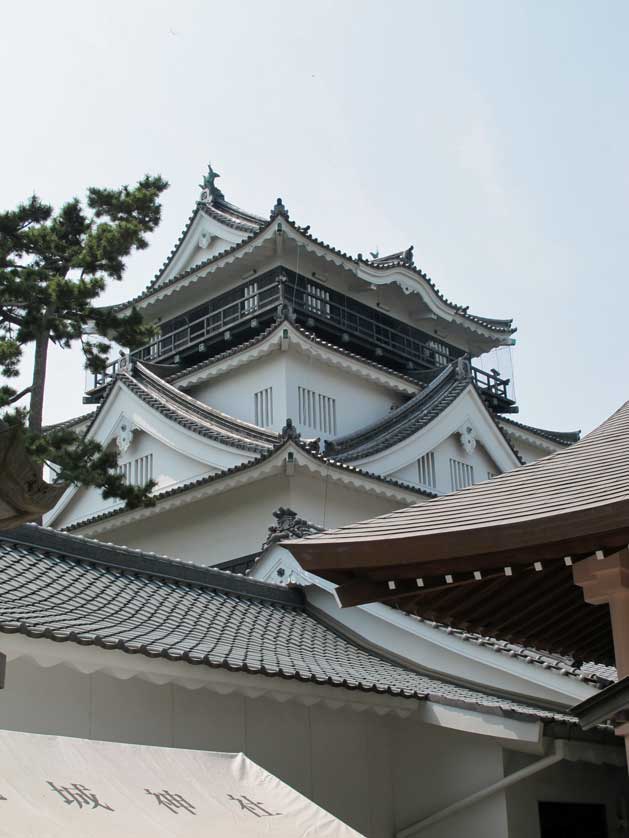
The modern keep (tenshu) at Okazaki Castle, Aichi Prefecture
Tokugawa Ieyasu's connection to Okazaki Castle
Tokugawa Ieyasu, born in Okazaki Castle on December 16, 1542, is arguably the most famous figure associated with this historic site. As the founder of the Tokugawa shogunate, which ruled Japan for over 250 years during the Edo Period, Ieyasu's connection to Okazaki Castle imbues it with significant historical importance.
Throughout the castle grounds, visitors can find numerous references to Ieyasu's life and legacy. One notable feature is "Ieyasu's Well," believed to be the source of water for the great leader's first bath. This well serves as a tangible link to Ieyasu's birth and early life at the castle.
The Iyeyasu and Mikawa Bushi Museum, located within the castle park, offers a deep dive into the life of Tokugawa Ieyasu and the history of the Mikawa region. Here, visitors can view replicas of Ieyasu's armor, original swords, and other weapons. The museum also houses an impressive collection of historical artifacts, including a bear-fur helmet once belonging to Matsudaira Chikatada (1431-1501), one of Ieyasu's ancestors.
A highlight of the museum is a moveable diorama depicting the Battle of Sekigahara in 1600, a pivotal moment in Ieyasu's rise to power. This interactive display features figurines of important warlords, bringing this crucial historical event to life for visitors.
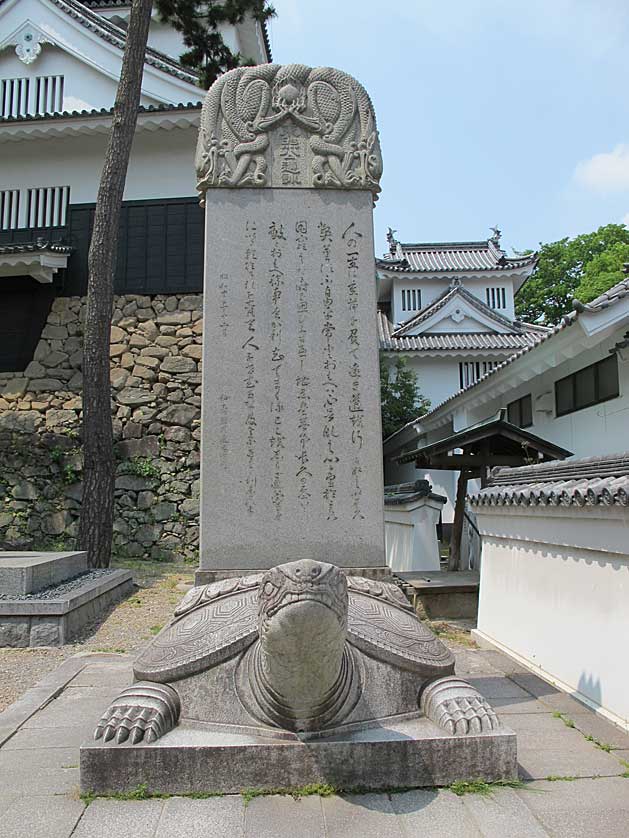
Stone stele commemorating Ieyasu Tokugawa, who was born at Okazaki Castle in 1543
Exploring the castle grounds and Okazaki Park
Okazaki Castle is surrounded by the beautiful Okazaki Park, offering visitors a chance to immerse themselves in both history and nature. The park is a peaceful oasis, dotted with stone walls, moats, eateries, and shrines, providing a perfect setting for a leisurely stroll.
One of the park's most popular features is its impressive collection of cherry trees, making it a prime spot for hanami (cherry blossom viewing) in spring. The park is also known for its beautiful wisteria blooms in May, adding another layer of seasonal beauty to the castle grounds.
As you explore the park, you'll encounter numerous statues and monuments dedicated to Tokugawa Ieyasu and other historical figures. These serve as constant reminders of the area's rich history and cultural significance.
The park also houses a traditional Noh theater, offering visitors a glimpse into classical Japanese performing arts. This addition to the castle grounds highlights the cultural importance of Okazaki beyond its military history.
For those interested in a more immersive experience, the park sometimes features costumed performers portraying samurai and other historical figures. These actors, often part of the "Great Ieyasu Aoi Busho Tai" team, bring history to life and offer unique photo opportunities for visitors.
The Ieyasu and Mikawa Bushi Museum
The Ieyasu and Mikawa Bushi Museum, located within Okazaki Castle Park, is a must-visit destination for history enthusiasts. This museum offers a comprehensive look at the life of Tokugawa Ieyasu and the samurai culture of the Mikawa region.
Inside the museum, visitors can explore a wide range of exhibits showcasing armor, weapons, and personal items related to Ieyasu and his era. One of the highlights is a collection of replicas of Ieyasu's armor, including his famous gold-plated helmet. These displays provide insight into the military technology and aesthetic preferences of the time.
The museum also features an array of original swords, demonstrating the craftsmanship of Japanese sword-making. Visitors can admire the intricate details of these weapons, understanding their importance not just as tools of war, but as works of art.
A unique attraction at the museum is the opportunity for visitors to try on samurai armor. This interactive experience allows guests to feel the weight and restrictions of the armor, giving them a tangible connection to the past. Visitors can even have their picture taken while wearing the armor or sitting in a mounted samurai's saddle.
Throughout the museum, informative displays and videos provide context to the exhibits, detailing Ieyasu's life and the historical events that shaped the region. This comprehensive approach to presenting history makes the museum an educational experience suitable for visitors of all ages.
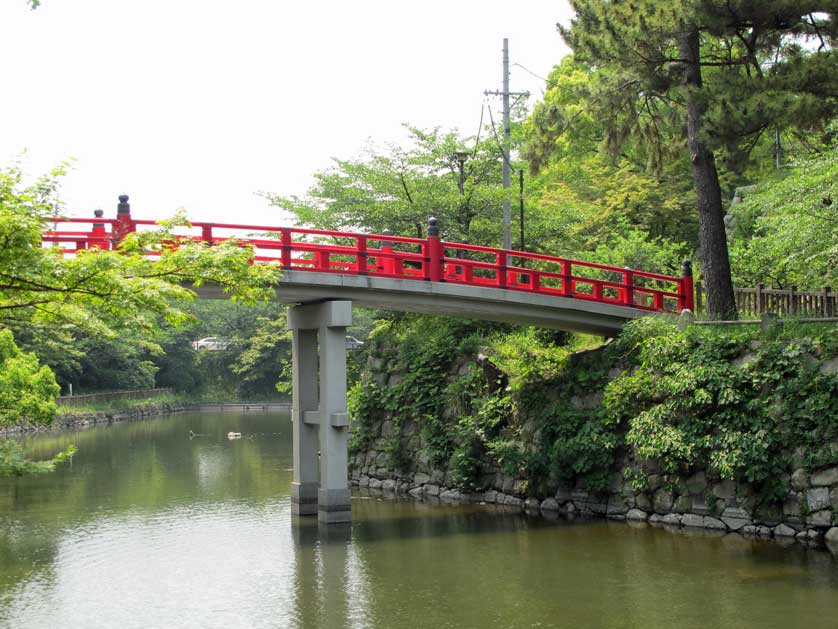
Okazaki Castle Park with castle moat and bridge
Seasonal attractions and events at Okazaki Castle
Okazaki Castle and its surrounding park offer a variety of seasonal attractions and events throughout the year, making it a destination worth visiting in any season.
Spring is arguably the most popular time to visit, as the castle grounds burst into color with hundreds of cherry trees in bloom. The annual Cherry Blossom Festival, typically held from early to mid-April, attracts thousands of visitors. During this time, the castle and cherry blossoms are illuminated in the evenings, creating a magical atmosphere.
In May, the park's wisteria comes into bloom, offering another spectacular floral display. The Gomangoku Fuji Matsuri (Wisteria Festival) is held during this time, with the flowers beautifully illuminated in the evenings.
Summer brings its own excitement with the Okazaki Fireworks Festival, typically held on the first Saturday of August. This event showcases Okazaki's long history in the fireworks industry, with a spectacular display lighting up the night sky above the castle.
Autumn sees the castle grounds transformed by colorful foliage, providing a beautiful backdrop for the castle. The Autumn Citizen's Festival, held in early November, features displays of local products and portable shrine parades.
Throughout the year, the castle hosts various cultural events and historical reenactments. The "Great Ieyasu Aoi Busho Tai" samurai team regularly performs, bringing the castle's samurai history to life. These events offer visitors a chance to engage with Japanese history and culture in a vivid and interactive way.
Practical information for visiting Okazaki Castle
For those planning a visit to Okazaki Castle, here's some essential information to help you make the most of your trip:
- Location: The castle is located at 561 Kosei-cho, Okazaki, Aichi Prefecture, Japan.
- Opening Hours: The castle is open daily from 9:00 AM to 5:00 PM (last admission at 4:30 PM).
- Admission Fees: Entry to the castle costs 200 yen for adults. A combined ticket for the castle and the Ieyasu and Mikawa Bushi Museum is available for 500 yen.
- Okazaki Castle Access: The castle is a 15-minute walk from Higashi Okazaki Station on the Meitetsu Line. From Nagoya Station, take a Meitetsu Express train to Higashi Okazaki Station (about 30 minutes).
- Facilities: The castle has an elevator for easy access to all floors. There are also souvenir shops and rest areas within the castle grounds.
- Best Time to Visit: While the castle is beautiful year-round, spring (for cherry blossoms) and autumn (for fall foliage) are particularly popular.
- Nearby Attractions: Consider visiting the nearby Hatcho Miso factories to learn about this famous local product.
Remember to check the official website or contact the castle directly for the most up-to-date information on opening hours and any special events that might be taking place during your visit. With its rich history, beautiful surroundings, and cultural significance, Okazaki Castle offers a memorable experience for anyone interested in Japanese history or Japanese Castles.
Okazaki Castle Video
[Insert video player or link here]
